This Brazilian Shrimp Soup (Bobó de Camarão) is an easy Brazilian recipe made with shrimp and vegetables cooked in a creamy yuca and coconut milk sauce. Serve it with rice and farofa and enjoy one of the best seafood soups ever!
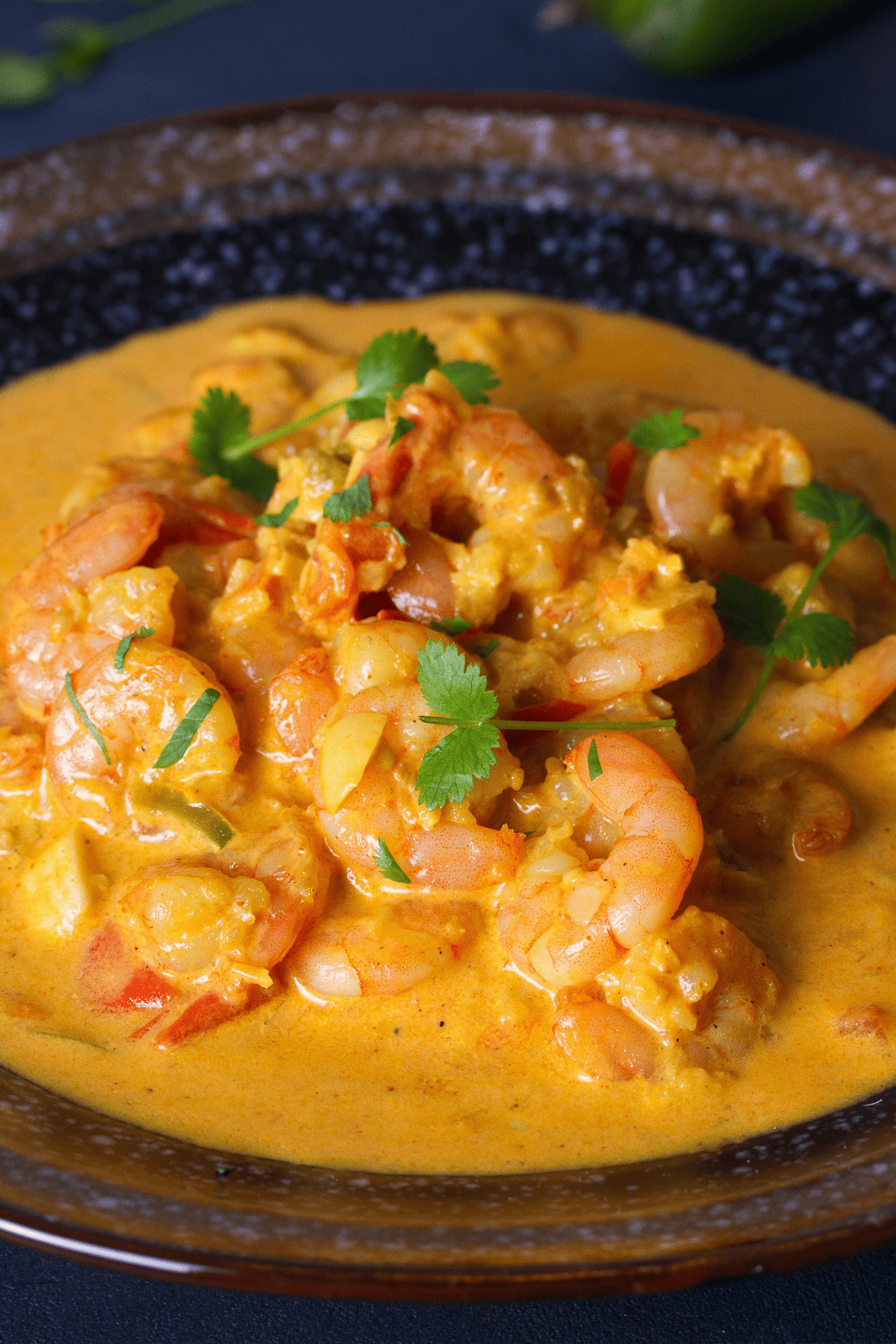
I don't know about you but I love shrimp!
One of the shrimp dishes most requested in my household is this shrimp soup, known in Brazil as bobó de camarão.
It is a traditional authentic Brazilian food dish of Afro-Brazilian origin.
The dish has plump shrimp in a creamy broth with a mildly spicy, savory flavor. It is to lick the plate!
Table of Contents
What is Brazilian Shrimp Soup?
Also known as bobó de camarão or shrimp bobó, it is an Afro-Brazilian creamy and thick soup made of fresh vegetables such as tomatoes, bell peppers, and the Brazilian sofrito (garlic and onion) sautéed in red palm oil (dendê oil), blended with cooked cassava or yuca and coconut milk in a blender, and then cooked with malagueta pepper, and shrimp until the shrimp is cooked.
It is savory and spicy presenting a light orange color. I define it as Shrimp in Creamy Yuca Sauce!
Some versions add grated ginger, dried shrimp, and/or cashew nuts to the soup. On the internet, you may find recipes that call for shredded cassava, but this is not the authentic way to make bobó.
The traditional recipe calls for boiled cassava, mashed or blended in a blender, working as a thickening agent to the dish.
The soup is served with long-grain white rice and farofa or pirão.
ORIGIN
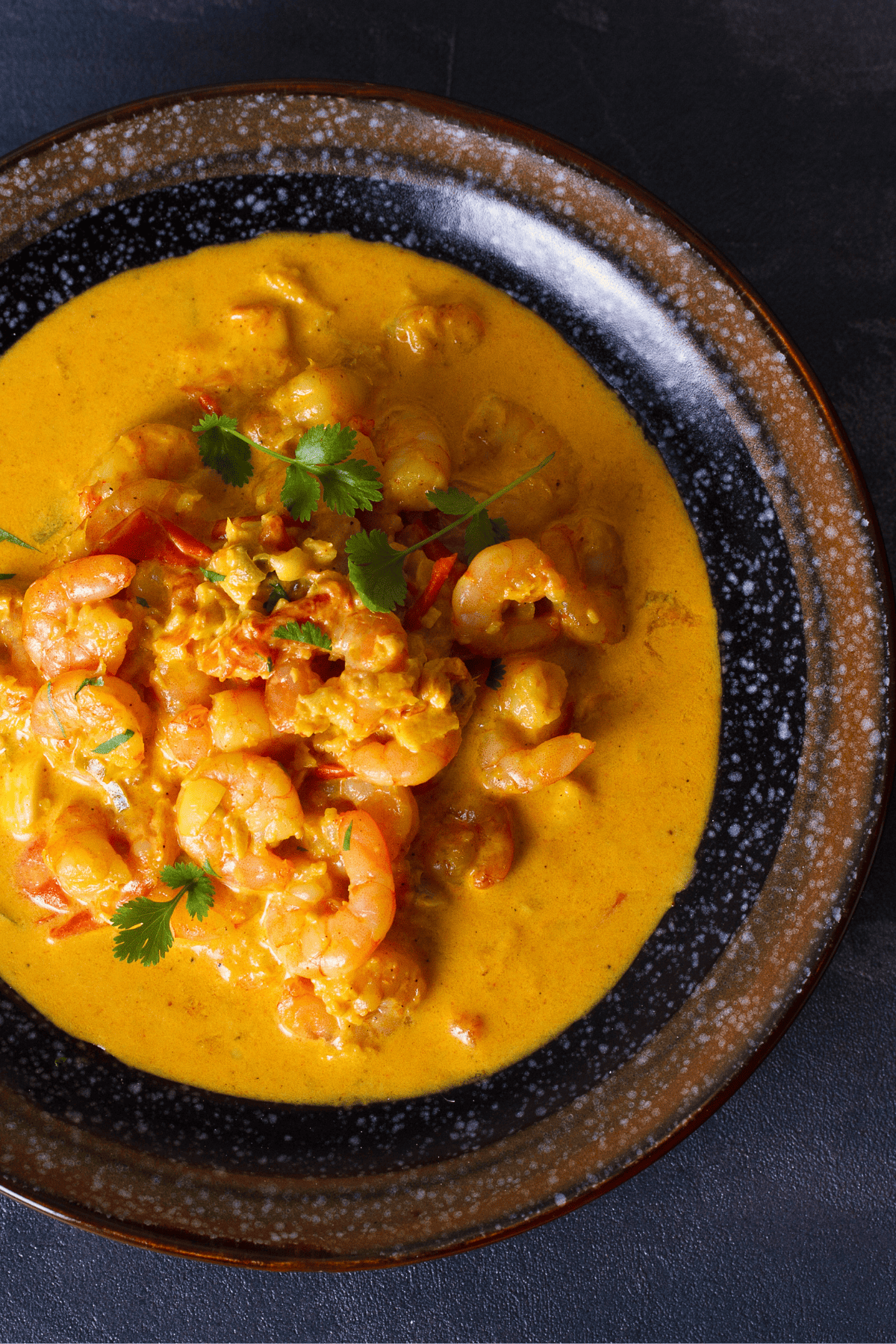
Bobó is a dish with soul! For Brazilians, it is very much soul food or comfort food.
Yes, it has mostly Afro-Brazilian origins with some indigenous influences (cassava or yuca) instead of white yam (inhame), more common in Afro-Brazilian cuisine.
This shrimp soup recipe comes from Bahia, a state in the Northeastern region with the largest number of black African descendants in Brazil.
Bahian cuisine is unique compared to other regional cuisines in my home country. Most of its dishes include the so-called holy trinity of Bahian cuisine (dendê oil, coconut milk, and malagueta peppers) and are heavy in seafood, black eye peas, okra, bananas, yams, yuca, and tapioca flour.
Malagueta pepper is a bright red chili pepper with 60,000 to 100,000 Scoville units or about the same level as Tabasco peppers.
Dendê oil is a thick, bright red oil extracted from the fruits of an African palm tree that adds both flavor and color to foods.
The exquisite regional cuisine of Bahia evolved when enslaved people adapted traditional recipes from both West Africa and Portugal using locally available ingredients.
Other traditional Bahian dishes include moqueca (shrimp stew), vatapá (a savory stew made of dried shrimp and bread), acarajé (Brazilian fritters made with black-eyed peas and dried shrimp), caruru (okra stewed in coconut milk), abará (Brazilian tamale made with mashed black-eyed peas wrapped in banana leaves), and even feijoada recipe, which is the national dish of Brazil.
Ingredients and Substitutions
To make this easy shrimp soup, you will need:
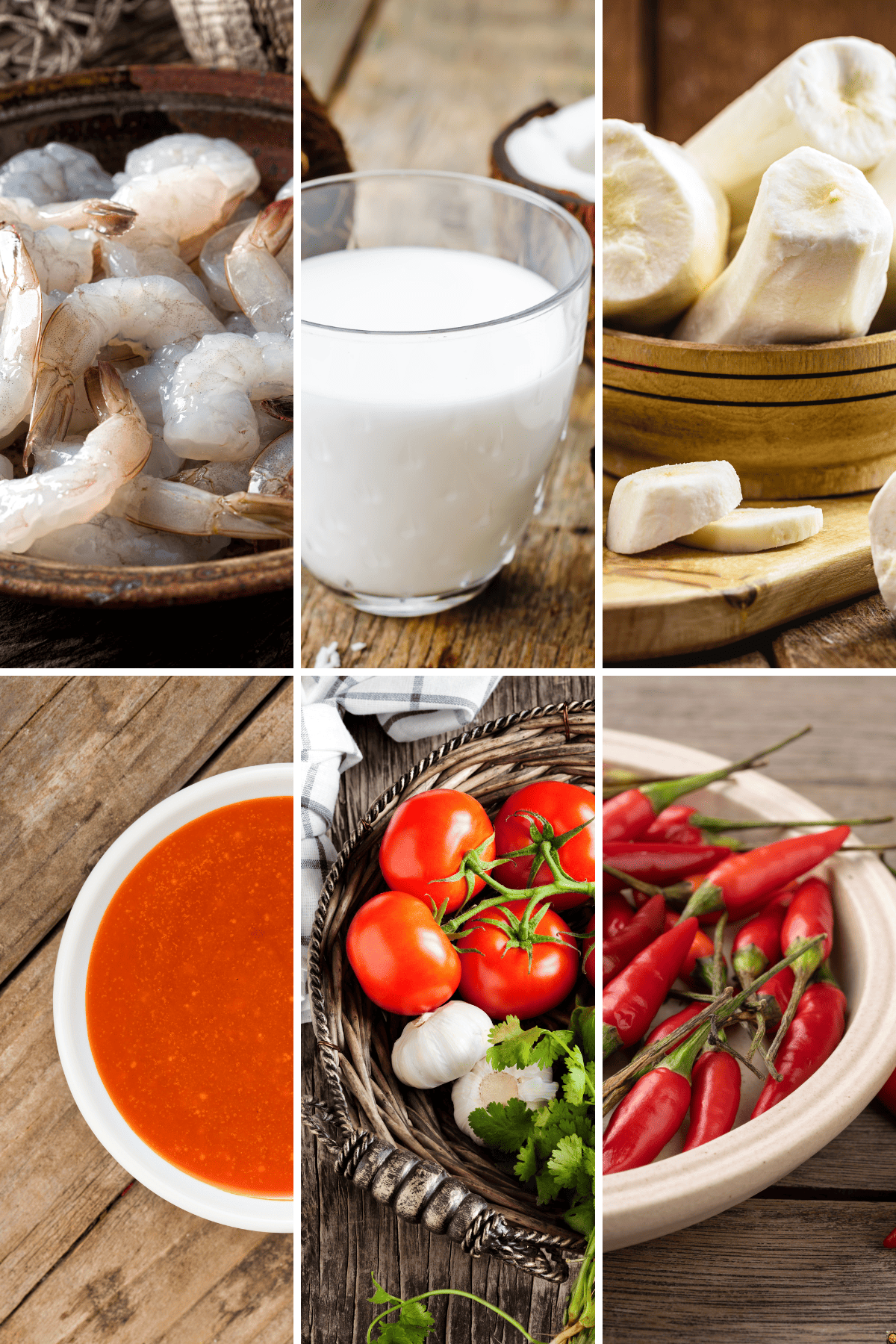
- 1 pound large shrimp peeled, deveined, and tail removed
- 1 pound yuca peeled and boiled, or cassava (NOTE: You can find it in the produce aisle of Walmart or in the frozen aisle with other Latin products. It comes in a bag, already peeled. You can boil it from frozen but it will take a few extra minutes). If you prefer, use white yams (not potatoes) for making this shrimp soup but the flavor won't be the same.
- 3 tablespoons dendê oil, divided, or red palm oil (you may replace it with a mild vegetable oil such as canola mixed with 2 teaspoon turmeric but be aware the flavor won't be the same)
- ½ large yellow onion, sliced (or white onion)
- ½ large red bell pepper, deseeded and sliced
- ½ large yellow bell pepper, deseeded and sliced
- 2 large tomatoes, blanched, deseeded, and sliced (SEE INSTRUCTIONS) -- or you can use about 1 cup of canned diced tomatoes, drained
- 2 garlic cloves, minced
- ½ cup green onion, chopped and divided (or cilantro)
- 1 cup canned coconut milk (use ¾ cup for a thicker soup if you prefer) -- if you are not a fan of coconut milk, you can use heavy cream or half-and-half but the taste won't be the same.
- ½ tablespoon minced Malagueta pepper (or Tabasco or cayenne pepper) -- For a milder pepper, use jalapeno
1½ limes, divided
Salt and ground pepper to taste
How to Make Shrimp Soup
1. Blanching: To peel a tomato, first use your paring knife to cut out the stem. Then slice a shallow X in the bottom end. Using a slotted spoon, plunge the tomato into boiling water for about 20 seconds, then plunge it into a bowl of iced water. This will stop the tomato from cooking and further loosen the skin. Remove the cooled tomato and peel away the skin. If using canned diced tomatoes, skip this step!
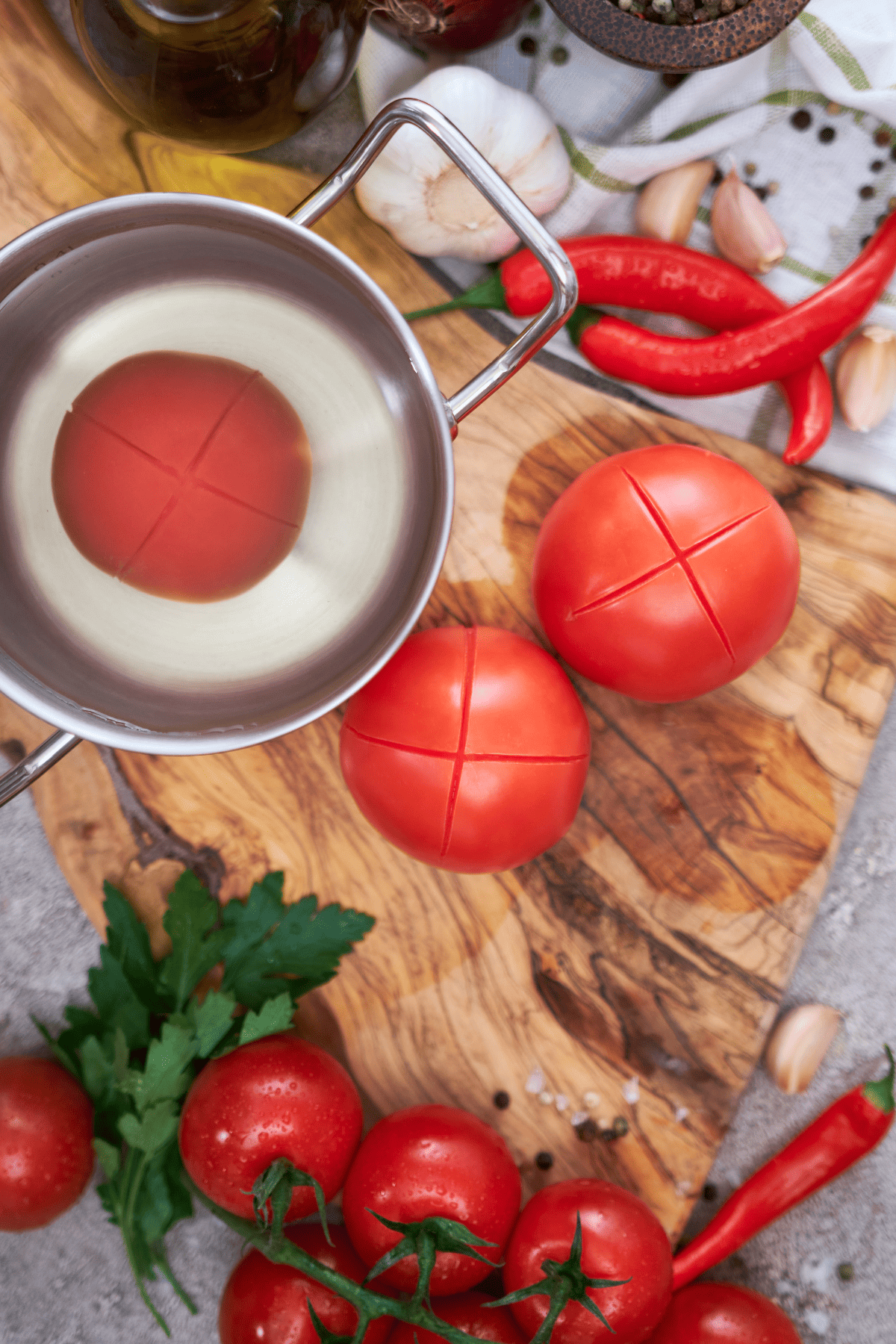
2. In a medium bowl, season the shrimp with salt and ground pepper. Drizzle with the juice of 1 lime. Reserve in the fridge for making this shrimp soup recipe.
3. In a large pot, pour enough water to cover the peeled yuca or cassava, and sprinkle 1 tablespoon of salt. Boil for about 18-20 minutes or until very tender or falling apart. Drain and then when warm enough to handle, remove the woody fiber in the middle of the cooked cassava.
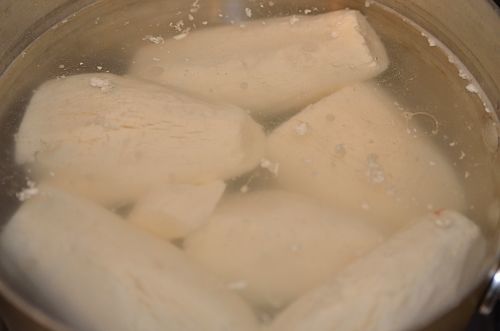
4. Meanwhile, in a large pan over medium heat, sautée the onion and bell peppers in 2 tablespoons of dendê oil for about 3 minutes, stirring now and then. Add the tomatoes and sautée for 2 minutes more. Then, add the garlic and ¼ cup green onions or cilantro. Sautée for about 30 seconds.
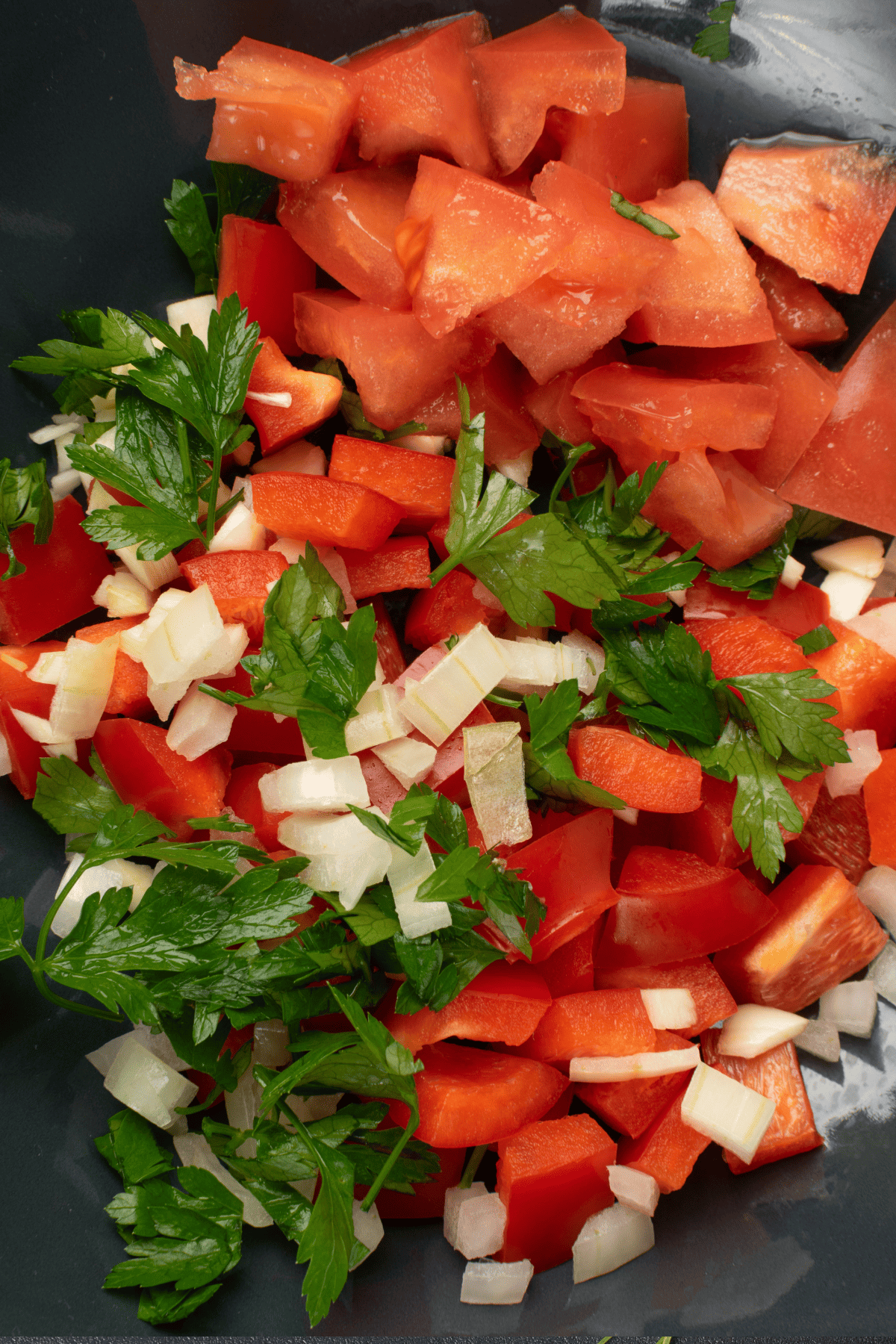
5. Blend the sautéed vegetables with the coconut milk and the boiled yuca in the blender until homogenous.
6. Let the blended mixture cook over medium heat for about 7 minutes, stirring every so often. Add the shrimp, peppers, and the remaining 1 tablespoon of dendê or palm oil. Let cook for about 3 minutes or just until the shrimp is cooked or turned pink.
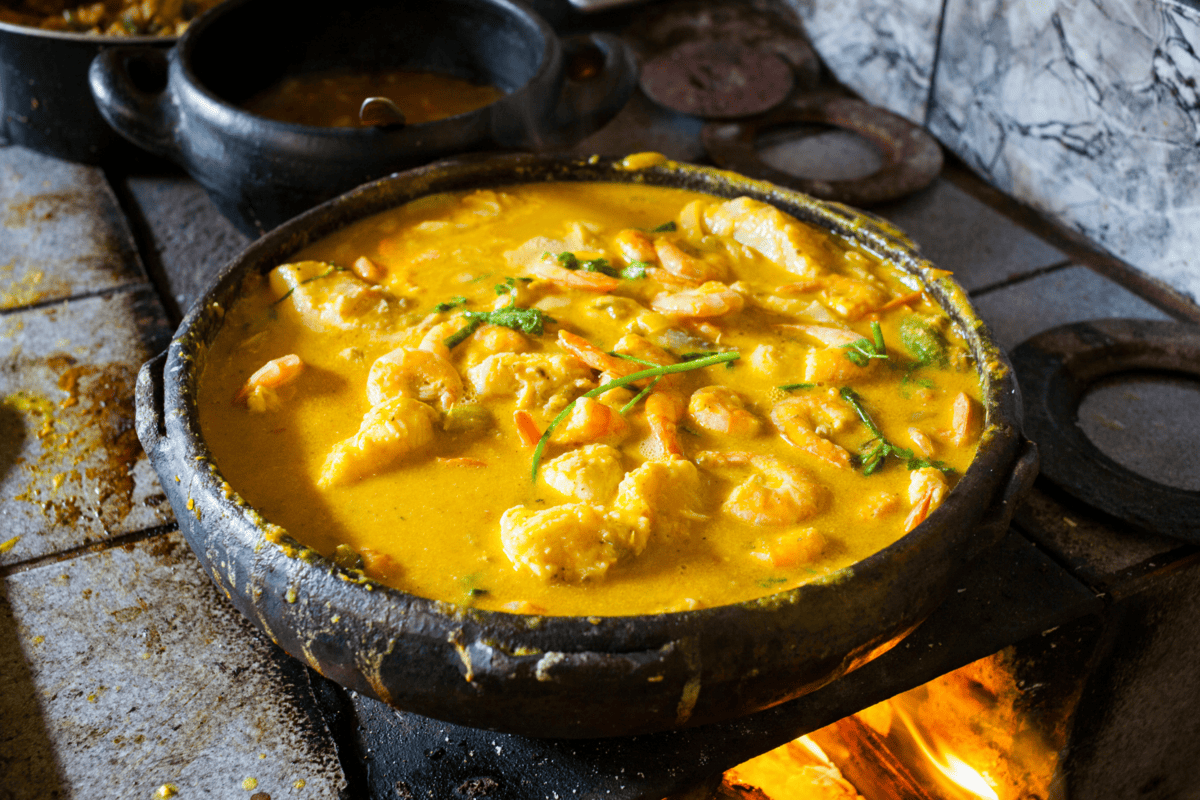
7. Remove from the heat, adjust the salt, and add the juice of ½ lime and ¼ cup cilantro or green onions. Stir well. Serve over white rice. Enjoy our shrimp soup!
NOTE: This shrimp dish is even more delicious the next day. 🙂
How to Serve Shrimp Soup
You can serve your Brazilian shrimp soup over white rice, and a side of farofa or pirão de peixe (fish gravy thickened with cassava flour).
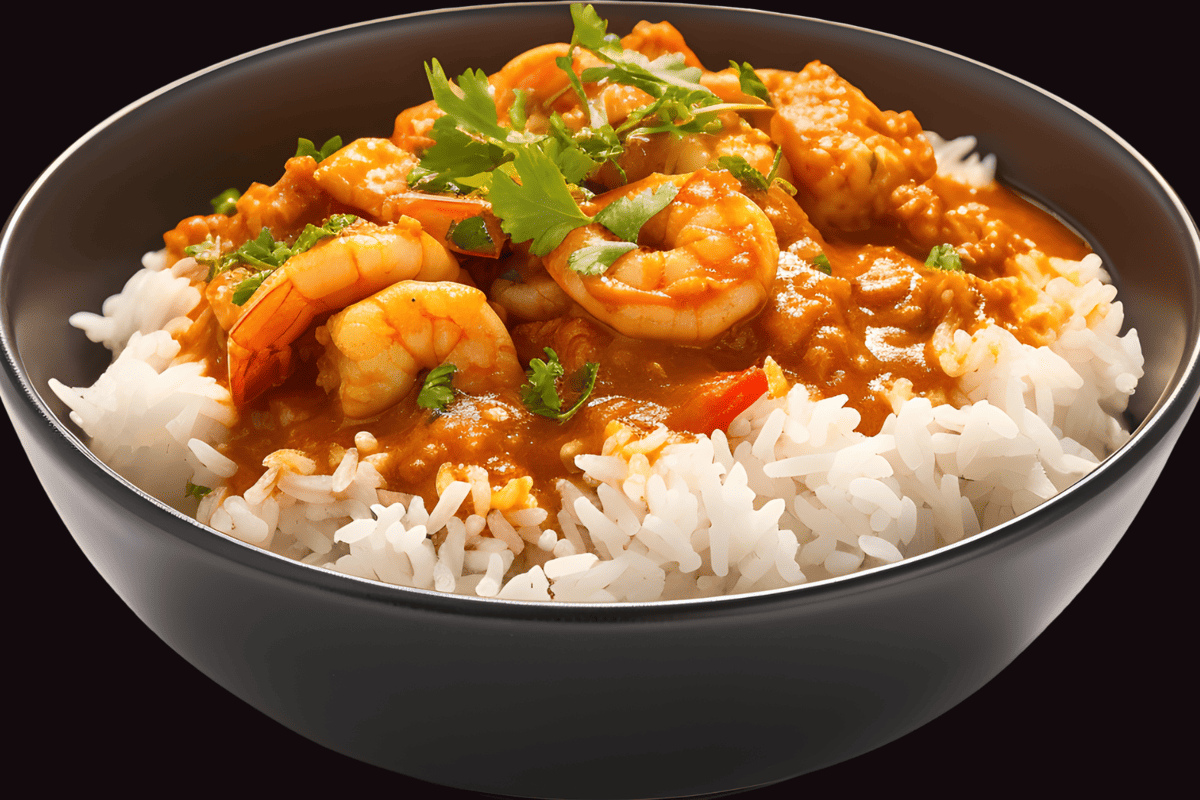
Some people enjoy it with farofa de dendê, which is basically toasted cassava flour in dendê oil. To make it, heat up some dendê oil over medium heat, sauté minced garlic and chopped onion, and then add the cassava flour mixing and toasting for a minute or two—no bacon OR butter necessary.
Shrimp Bobó Variations
Just like moqueca, Brazilian shrimp soup or bobó presents a few variations:
- Fish -- it replaces shrimp. Choose a white fish with a mild flavor -- without a fishbone.
- Fish and shrimp -- It uses both kinds of seafood.
- Fish and/or shrimp in a hollow pumpkin shell that has been cooked --just like this chicken stew in a pumpkin.
Tips For Making Shrimp Soup Recipe
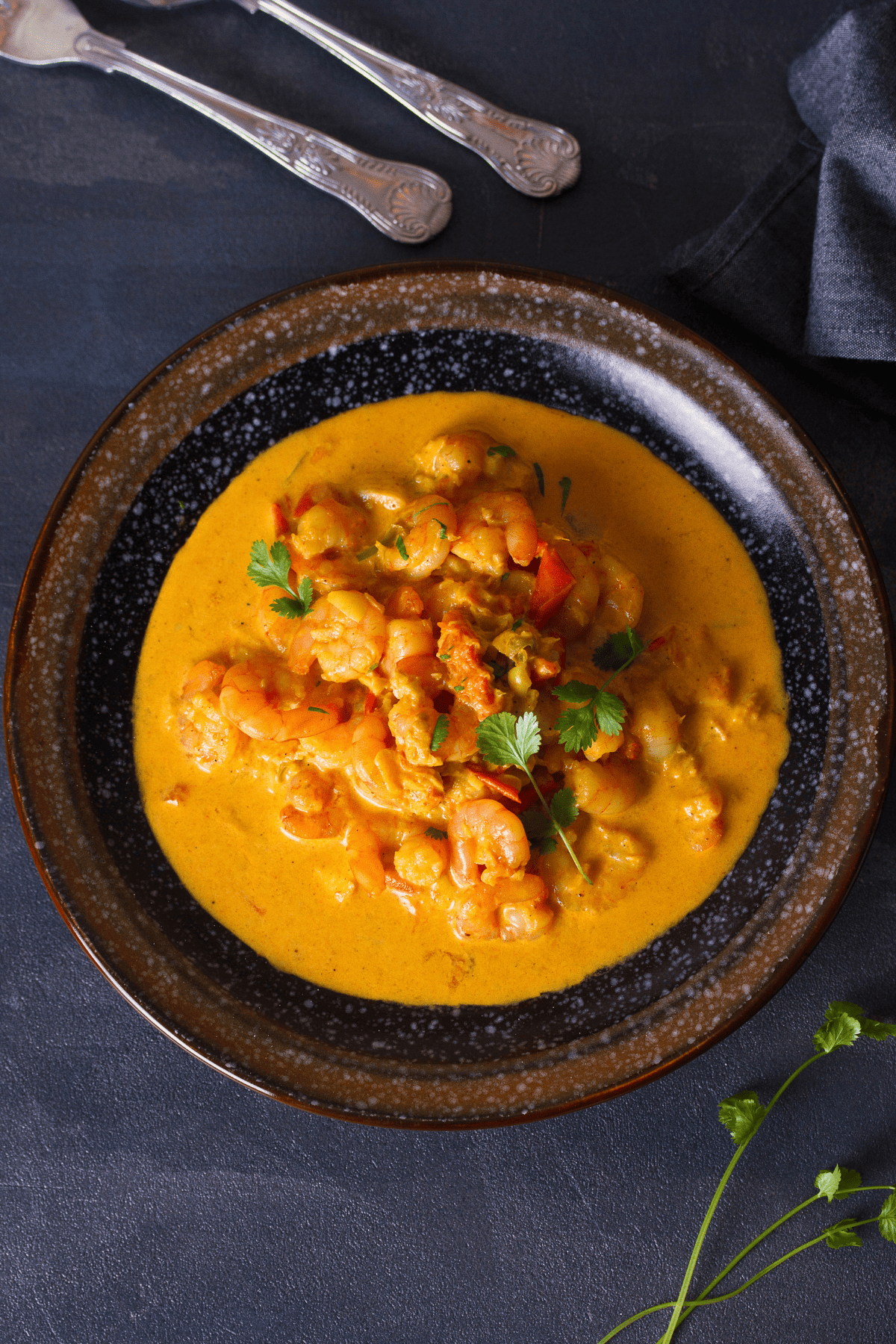
- Make sure to season the shrimp well and let it marinate while boiling the cassava.
- Tomatoes must be peeled; otherwise, the peel will leave some hard speckles after blending in a blender.
- Boil the cassava until it falls apart. Please don't forget to remove the woody fiber in the center of each cassava root. It can make your blender work harder and will add an unpleasant flavor to your shrimp soup.
- Buy thick canned coconut milk. Or use coconut cream which is thicker than coconut milk but do NOT use cream of coconut (Coco Lopez) because it is quite sweet.
- For a mildly spicy soup, use jalapenos.
- If you don't find red palm oil, you may mix 2 tablespoon mild vegetable oil with 2 teaspoon ground turmeric for color but the flavor won't be the same.
How to Store
- Fridge: Store this Brazilian shrimp soup in an airtight container in the fridge for up to 2-3 days.
- Freezer: You may freeze it in a freezer-safe container for up to 2 months but be aware after reheating, the shrimp may be overcooked and become chewy. Also, you may have to add a touch of broth or coconut milk to thin the sauce.
- Thaw it in the fridge overnight.
- To reheat, place the shrimp soup in a saucepan and reheat it over medium-low, stirring often, until hot. Serve immediately!
Other shrimp recipes to enjoy
- Brazilian shrimp stew (ensopado de camarão)
- Shrimp diablo
- Shrimp in coconut sauce
- Honey garlic butter shrimp
- Shrimp fajitas recipe
- Shrimp pot pies
- Garlic shrimp spaghetti recipe
- Moqueca recipe
- Mexican shrimp cocktail recipe
- Air fryer shrimp recipe
- Shrimp carbonara recipe
- Shrimp fried rice recipe
PIN AND ENJOY!
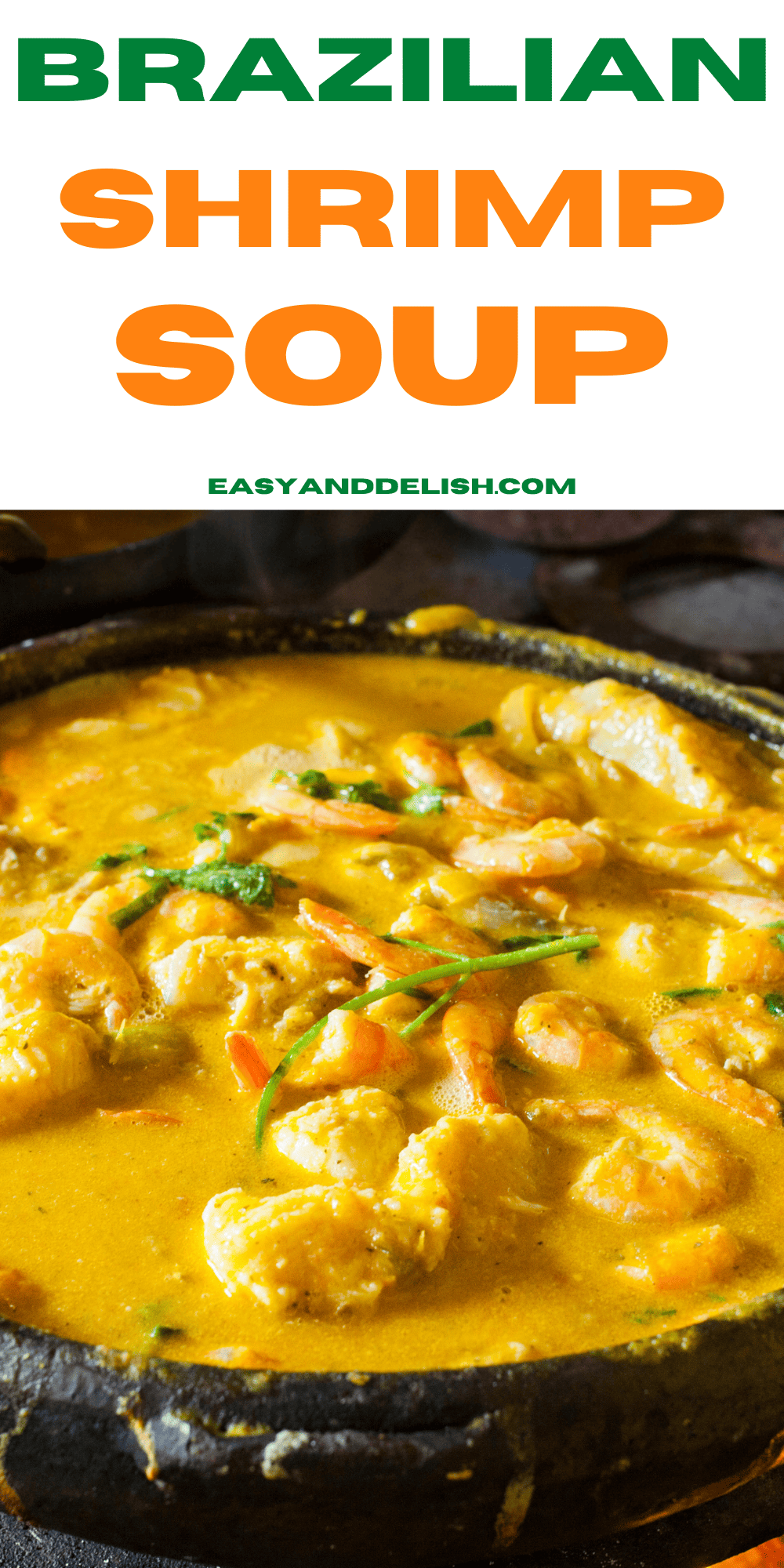
Brazilian Shrimp Soup
Equipment
- 2 Pans 1 large and 1 small
- 1 large pot
- 2 medium bowls
- 1 blender
- 1 wooden spoon
- 1 Chef's knife
- 1 pairing knife
- 1 cutting board
Ingredients
- 1 pound large shrimp peeled, deveined, and tail removed
- 1 pound yuca peeled and boiled -- or cassava (NOTE: You can find it in the produce aisle of Walmart or in the frozen aisle with other Latin products. It comes in a bag, already peeled. You can boil it from frozen but it will take a few extra minutes). If you prefer, use white yams (not potatoes) for making this shrimp soup but the flavor won't be the same.
- 3 tablespoons dendê oil divided, or red palm oil (NOTE: you may replace it with a mild vegetable oil such as canola mixed with 2 teaspoon turmeric but be aware the flavor won't be the same)
- ½ large yellow onion sliced (or white onion)
- ½ large red bell pepper deseeded and sliced
- ½ large yellow bell pepper deseeded and sliced
- 2 large tomatoes blanched, deseeded, and sliced (SEE INSTRUCTIONS) -- or you can use about 1 cup of canned diced tomatoes, drained
- 2 garlic cloves minced
- ½ cup green onion chopped and divided (or cilantro)
- 1 cup canned coconut milk use ¾ cup for a thicker soup if you prefer -- if you are not a fan of coconut milk, you can use heavy cream or half-and-half but the taste won't be the same.
- ½ tablespoon minced Malagueta pepper or Tabasco or cayenne pepper -- For a milder pepper, use jalapeno
- 1½ limes divided
- Salt and ground pepper to taste
Instructions
- Blanching: To peel a tomato, first use your paring knife to cut out the stem. Then slice a shallow X in the bottom end. Using a slotted spoon, plunge the tomato into boiling water for about 20 seconds, then plunge it into a bowl of iced water. This will stop the tomato from cooking and further loosen the skin. Remove the cooled tomato and peel away the skin. If using canned diced tomatoes, skip this step!
- In a medium bowl, season the shrimp with salt and ground pepper. Drizzle with the juice of 1 lime. Reserve in the fridge.
- In a large pot, pour enough water to cover the peeled yuca or cassava, and sprinkle 1 tablespoon of salt. Boil for about 18-20 minutes or until very tender or falling apart. Drain and then when warm enough to handle, remove the woody fiber in the middle of the cooked cassava.
- Meanwhile, in a large pan over medium heat, sautée the onion and bell peppers in 2 tablespoons of dendê oil for about 3 minutes, stirring now and then. Add the tomatoes and sautée for 2 minutes more. Then, add the garlic and ¼ cup green onions or cilantro. Sautée for about 30 seconds.
- Blend the sautéed vegetables with the coconut milk and the boiled yuca in the blender until homogenous.
- Let the blended mixture cook over medium heat for about 7 minutes, stirring every so often. Add the shrimp, peppers, and the remaining 1 tablespoon of dendê or palm oil. Let cook for about 3 minutes or just until the shrimp is cooked or turned pink.
- Remove from the heat, adjust the salt, and add the juice of ½ lime and ¼ cup cilantro or green onions. Stir well.
- Serve over white rice. Enjoy our shrimp soup! NOTE: This shrimp soup is even more delicious the next day.
Recipe Notes
- Fridge: Store this Brazilian shrimp soup in an airtight container in the fridge for up to 2-3 days.
- Freezer: You may freeze it in a freezer-safe container for up to 2 months but be aware after reheating, the shrimp may be overcooked and become chewy. Also, you may have to add a touch of broth or coconut milk to thin the sauce.
- Thaw it in the fridge overnight.
- To reheat, place the shrimp soup in a saucepan and reheat it over medium-low, stirring often, until hot. Serve immediately!
Nutrition
** Nutrition labels on easyanddelish.com are for educational purposes only. This info is provided as a courtesy and is only an estimate, since the nutrition content of recipes can vary based on ingredient brand or source, portion sizes, recipe changes/variations, and other factors. We suggest making your own calculations using your preferred calculator, based on which ingredients you use, or consulting with a registered dietitian to determine nutritional values more precisely.
Please note that health-focused and diet information provided on easyanddelish.com is for educational purposes and does not constitute medical advice, nor is it intended to diagnose, treat, cure, or prevent disease. Consult with your doctor or other qualified health professional prior to initiating any significant change in your diet or exercise regimen, or for any other issue necessitating medical advice.
This post was first publsihed on March 6, 2012.




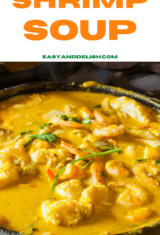
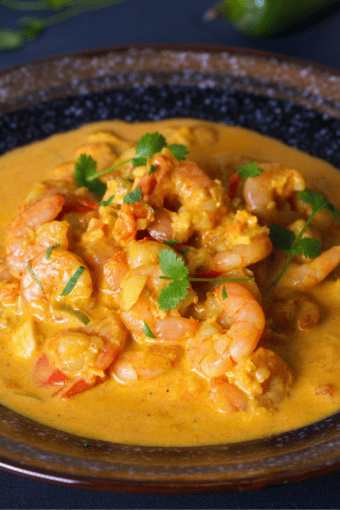
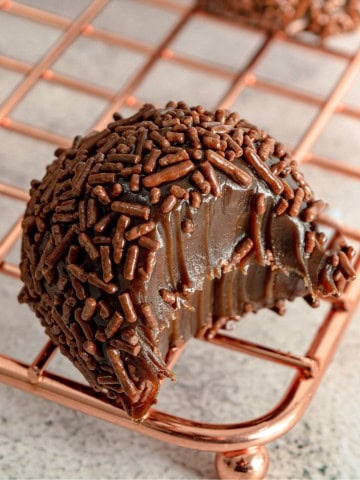


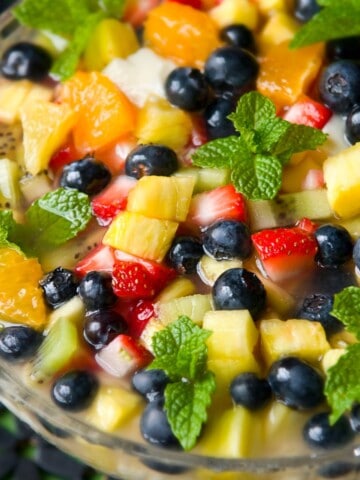
Hailey says
Is there a substitute I can use for the palm oil that will give the final recipe a similar taste?
Denise Browning says
Hi Hailey! For color, you can mix a little bit of oil with annatto (a Mexican powder) or ground turmeric. But as for flavor, there is no sub for palm oil. Yet the Turmeric will give a better taste than annatto to the dish although is not the same as palm oil. But the difference is not big.
flavia says
Oi, Denise. Tudo bom? Vi suas duas receitas de camarao e queria saber porque vc adiciona um suco de limao quase antes de tirar do fogo. E por que nomalmente eu faco para tirar o cheiro do camarao antes de cozinhar. Beijos
Denise Browning says
Oi Flavia! Eu coloco suco de limao porque acentua o gosto de todos os temperos que foram postos na receita. Para remover um pouco o gosto do camarao, alho picado e alguns temperos como cominho ajudam a anenizar o gosto do camarao quando adicionados uns 30 minutos antes do camarao cozinhar. Eh so temperar e deixar descansar na geladeira por meia hora. Esses temperos sao fortes e ajudam a amenizar o cheiro e gosto de camarao.
Flavia says
Muito obrigada!! Thank you!! The recipe is amazing!!! I cooked yesterday and everyone loved it!!